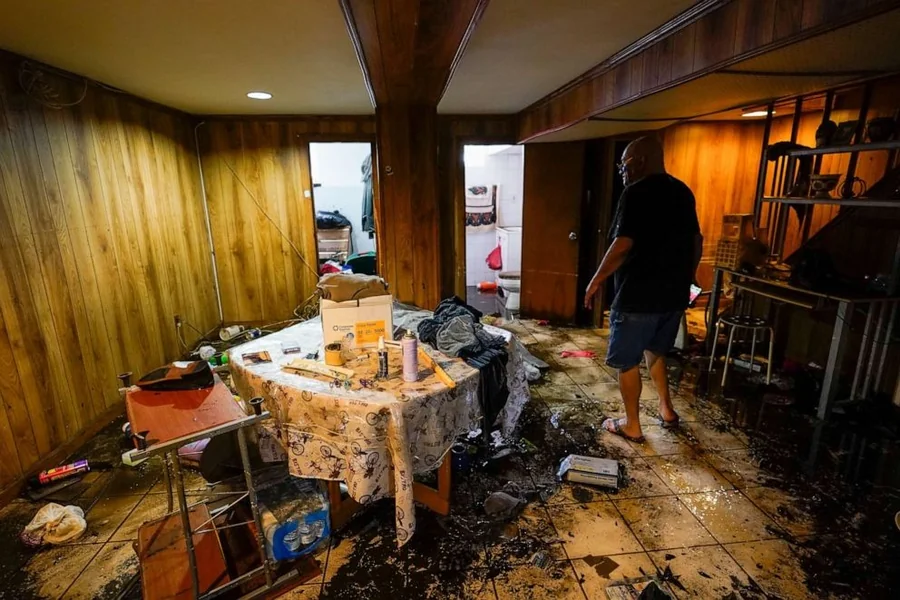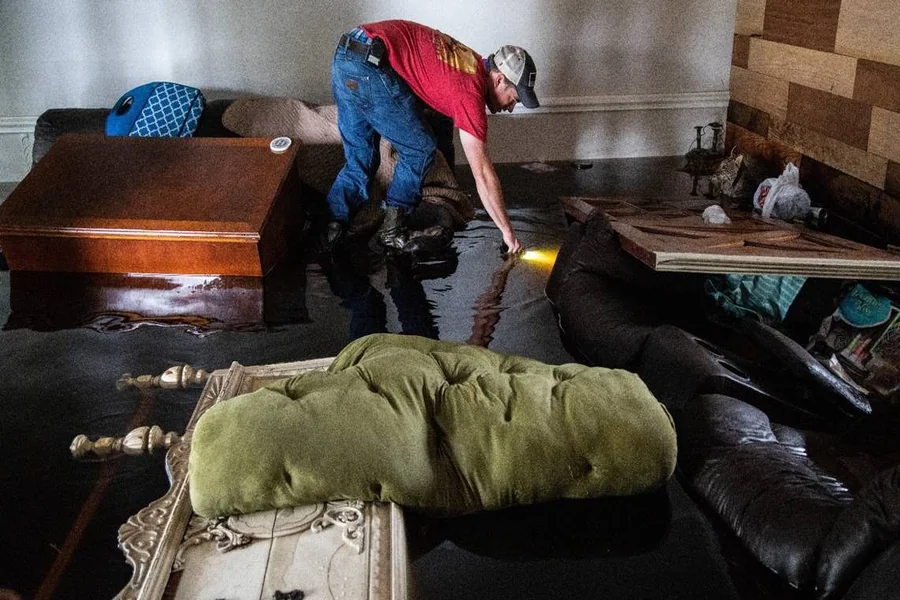The aftermath of intense rainstorms can be debilitating. Structural impairment, roof leaks, and flooding can seriously jeopardize your home or place of business.
So prompt action is essential to avoid expensive repairs. Work with reputable cleanup businesses during these trying times. This guarantees that your property is safeguarded promptly and properly repaired.
Water Damage: What Causes It?
Depending on the sort of weather and the conditions it creates. Storm-related destruction can take many different forms.
Your home is susceptible to these occurrences due to the combined effects of strong winds and heavy rain. Which can cause loss and create openings for liquid matter to enter so water damage repair is advised. Among the primary reasons for this are:
- Structural leaks in the house
- Shingles on the roof were raised
- Siding that is broken
- Floods
- Burst pipes
Storm destruction can result in any of the aforementioned problems as well as letting too much moisture into your house. Depending on the nature of the destruction.
Post-storm flooding can range in seriousness and have a variety of possible outcomes. So it’s critical to understand what to search for to assess the entire scope of the problem.
Guide
To protect your possessions and peace of mind. Follow this simple, step-by-step instructions on what to do right away once a rainstorm strikes.
1. Put Safety First
- Making sure everyone is safe is the first responsibility after a violent rainstorm.
- Steer clear of standing fluid since it might conceal toxins, sharp items, or live electrical dangers.
- Keep an eye out for structural problems including drooping ceilings, broken walls, or unstable roofs.
- If you think there may be serious structural harm, leave the area and call the police.
A human may be knocked off their feet by just six inches of flowing floodwater. And a car can be washed away by a foot of rainwater. That is according to the National Weather Service (NWS). Be extremely cautious with flooding at all times – visit https://www.weather.gov/okx/coastal_flooding to learn more.
2. Check for Destruction That Is Visible (Without Taking Risks)
When it’s safe to go back, carefully check the outside:
- Inspect the roof for drooping, holes, or missing shingles.
- Check siding, windows, and doors for cracks or breaks.
- Check for debris obstructing drainage systems, fallen trees, or downed power lines.
- Take pictures and videos of any mutilation that is evident. This proof will be essential for upcoming insurance lawsuits.
3. Stop Additional Damage
If at all feasible, take short-term precautions to avoid more damage:
- Cover broken windows with plywood or plastic sheeting.
- Temporarily cover damaged areas of your roof using tarps.
- Transfer priceless items to drier or higher ground.
The Insurance Information Institute (III) states that to maintain their eligibility for full insurance coverage during a disaster. Homeowners frequently need to take reasonable steps to minimize mutilation.
For this reason, it’s essential to engage with seasoned cleanup businesses. A prompt mitigation strategy can be the difference between little repairs and large losses.
4. Speak with a Skilled Storm Cleaning Company
Repairing such destruction is not a do-it-yourself task. Skilled professionals possess the knowledge and tools necessary to:
- Remove any standing rainwater.
- Dehumidify and dry buildings
- Clear away any dangerous items and rubbish.
- Stop the growth of mold, which can start as early as 24 to 48 hours.
- Examine any concealed structural issues in detail.
A quick-response staff is on call around the clock to assist you in a safe and effective recovery. From immediate tarping and removal to comprehensive restoration. There are experts in managing every facet of storm damage – this website will tell you more.

5. Get the Insurance Claims System Started
Notifying your insurance carrier as soon as the emergency cleaning begins is essential.
- Present the records you collected, including pictures, videos, and written notes.
- Collaborate with your contractor to do any further evaluations that might be required.
- Maintain a record of all correspondence and bills for repairs.
Businesses that have expertise dealing directly with insurance companies. This helps clients have a more seamless and stress-free claims procedure.
Why Trust Pros for Storm Cleanup?
A professional stands out when you require cleaning services you can rely on:
- Emergency reaction around-the-clock
- Experts in storm repair accredited by the IICRC
- Modern drying, dehumidification, as well as equipment
- Quick, thorough evaluations
- Assistance with insurance and documentation
- Local knowledge of construction codes and weather
Procedure for Restoring Water Damage
-
Extraction and Drying
Eliminating all of the wetness is the first step in any repair procedure. This involves drying off every item in your house and eliminating any standing liquid substances.
-
Remediation
Mold and water intrusion frequently coexist. To detect mold and make sure that none is overlooked and allowed to grow in your house. This procedure entails thorough testing and inspection.
-
Structural Repairs
Your home’s walls, foundation, and roof may all be impacted. To stop the spread and preserve the stability of your house. Structural maintenance is frequently required.
-
Changing Out Spoiled Materials
This can impact paint, drywall, flooring, and other materials. Any components that are too weakened to restore must be replaced. So you can return your property to normal.

